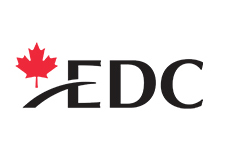A strategy canvas: A tool for developing a differentiation strategy for technology products
Companies have many differentiation strategies available to them as they develop new technology products. At a strategic level, competitive differentiation is achieved by adopting one of the value disciplines of competitive advantage: product leadership, customer intimacy and operational excellence.
Competitive differentiation strategy #1: Product leadership
In the Early Market, “product leadership” is your differentiation strategy, although it comes with a caution: all your initial marketing communication efforts must establish your core technology as radically new and innovative before you position your product as “leading.” This is because it is your innovative technology that allows you to establish a new product category and to attract first the technology enthusiasts. Once you get their approval, you can move on to the visionaries who want your product.
Competitive differentiation strategy #2 and #3: Customer intimacy and operational excellence
As your product category matures, you need to woo new customers that have different preferences from the Early Market. You then need to consider whether your competitive strategy should include elements of customer intimacy and/or operational excellence.
The strategy canvas: A differentiation strategy tool
At a more tactical level, you can use a strategy canvas to ensure your whole product is differentiated. The strategy canvas is a diagnostic tool and, at the same time, a framework for action.
As a diagnostic, the strategy canvas provides a visual tool that captures the current state of competition in a market. It allows you:
- to understand where your competitors currently invest their resources
- how the industry designs its marketing mix
- to see what the customer ultimately receives from the various competitive alternatives
As illustrated below, the horizontal axis displays the various factors in which the industry chooses to compete and invest.


Source: Kim, W. C. & Maubourgne, R. (2002). Charting Your Company’s Future. Boston: Harvard Business School Press.
Southwest Airlines’ strategy canvas
In the case of Southwest Airlines, we can see that their strategy canvas includes both traditional airlines and car transportation—the two main alternative means of transportation for the market. The horizontal axis lists the competitive factors that generate customer value in the transportation market. The value curve is the graphic depiction of how each transportation alternative scores on the competitive factors.
The strategy canvas above shows that Southwest Airlines created a value curve distinct from both car transportation and traditional airlines on competitive factors that many travellers consider essential: low price, friendly service, speed, and point-to-point routes. This profile has the advantage of being focused—so it is easy to communicate—and appeals simultaneously to many traditional airline travellers and car drivers.
Understand your competition (and how you can beat them)
The following three steps outline how you can learn to understand your competition and how to beat them.
- Describe your main competitors:
- How do they compete against you (for example, as a direct or an economic/substitute)?
- In the eyes of your customers, what are the strong and weak sides of the competition?
- Define how you are/will be different from the competition:
- What proves the key factors that motivate your target customers to buy (that is, what is the compelling reason to buy)? What attributes do they value?
- What differences exist between you and your competitors that generate value for your target customer?
- Does your technology or value chain create opportunities to offer additional value to your target customer that the competition is overlooking?
- On a strategy canvas, plot the value curves of your offering alongside those of your main competitors. The value curve you choose should be reflected in your whole product and product positioning.
References
Kim, W. C. & Maubourgne, R. (2006). Blue Ocean Strategy. Boston: Harvard Business School Press.
Treacy, M. & Wiersma, F. (1995). The Discipline of Market Leaders. New York: Perseus Books.

